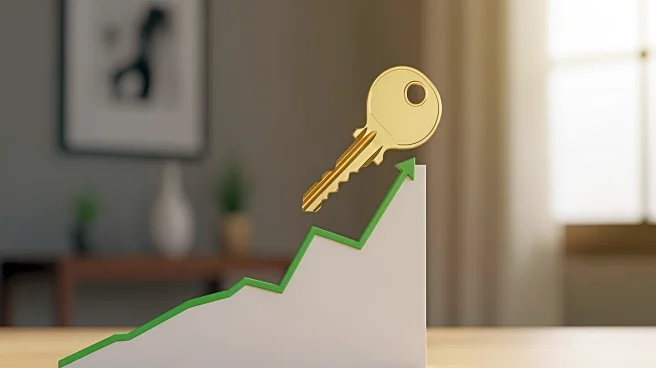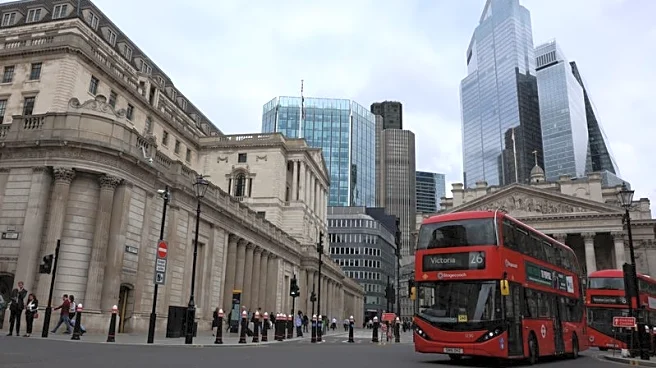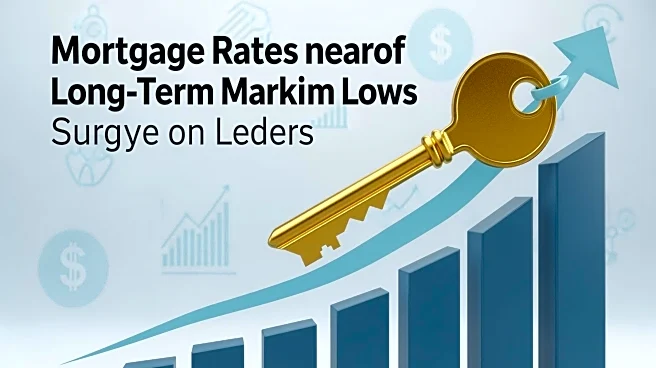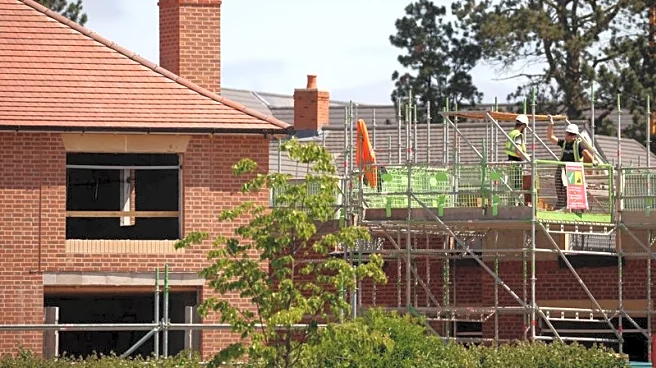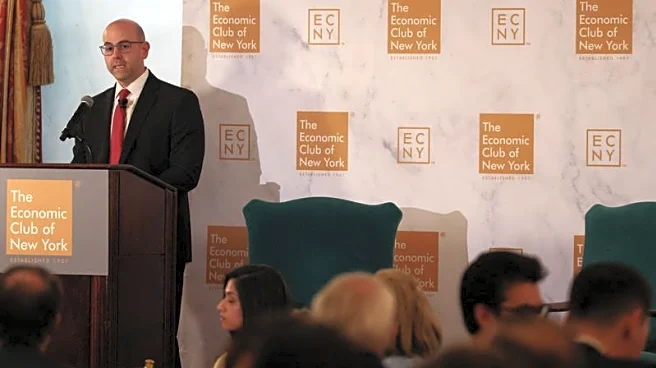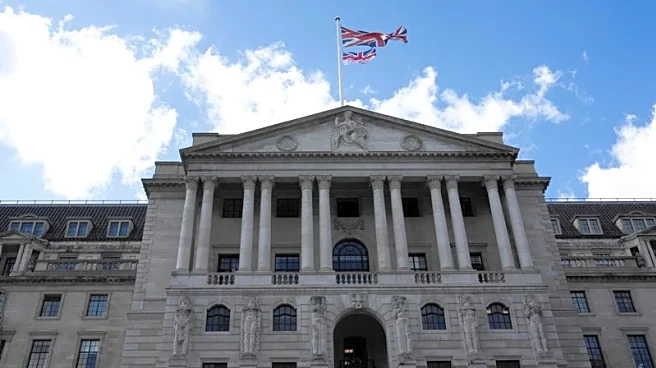What's Happening?
Mortgage rates have increased for the first time in eight months, with average rates on two- and five-year fixed plans rising by 0.02% to 4.98% and 5.02% respectively. This marks the first month-on-month
rate rise since February 2025. The number of available mortgage products has decreased to 6,998 options, although those looking to buy with a 5% or 10% deposit have the highest number of deals available in 17 years, totaling 1,362 options. The rise in rates is attributed to volatile swap rates, which lenders use to set borrowing rates, leading to a cautious approach among lenders. The uncertainty surrounding interest rate moves and forecasts for inflation to remain above target are contributing factors to the rate increase.
Why It's Important?
The increase in mortgage rates is significant for homeowners, particularly those looking to remortgage after coming off a five-year fixed rate from historically low rates in 2020. These homeowners may face an additional cost of approximately £260 per month on a £200,000 loan repaid over 25 years. Conversely, those coming off a two-year fixed deal may save around £200 per month due to lower average rates compared to two years ago. The rise in rates, coupled with potential higher taxes and tighter regulations, poses challenges for landlords, especially in the South, where new landlords are becoming scarce due to high stamp duty bills and stagnant property prices.
What's Next?
Many borrowers are awaiting the upcoming budget, which could influence future interest rate decisions. The current economic climate, with inflation forecasts remaining above target, suggests that further rate cuts by the Bank of England are unlikely this year. Landlords may continue to face difficulties, particularly in the South, while the North East of England emerges as a hotspot for buy-to-let owners, with 28.4% of homes sold in the region being purchased by landlords.
Beyond the Headlines
The shift in mortgage rates and the broader economic implications highlight the challenges faced by homeowners and landlords in navigating the current financial landscape. The disparity between regions in terms of buy-to-let investments underscores the evolving dynamics in the property market, influenced by economic policies and regional economic conditions.
